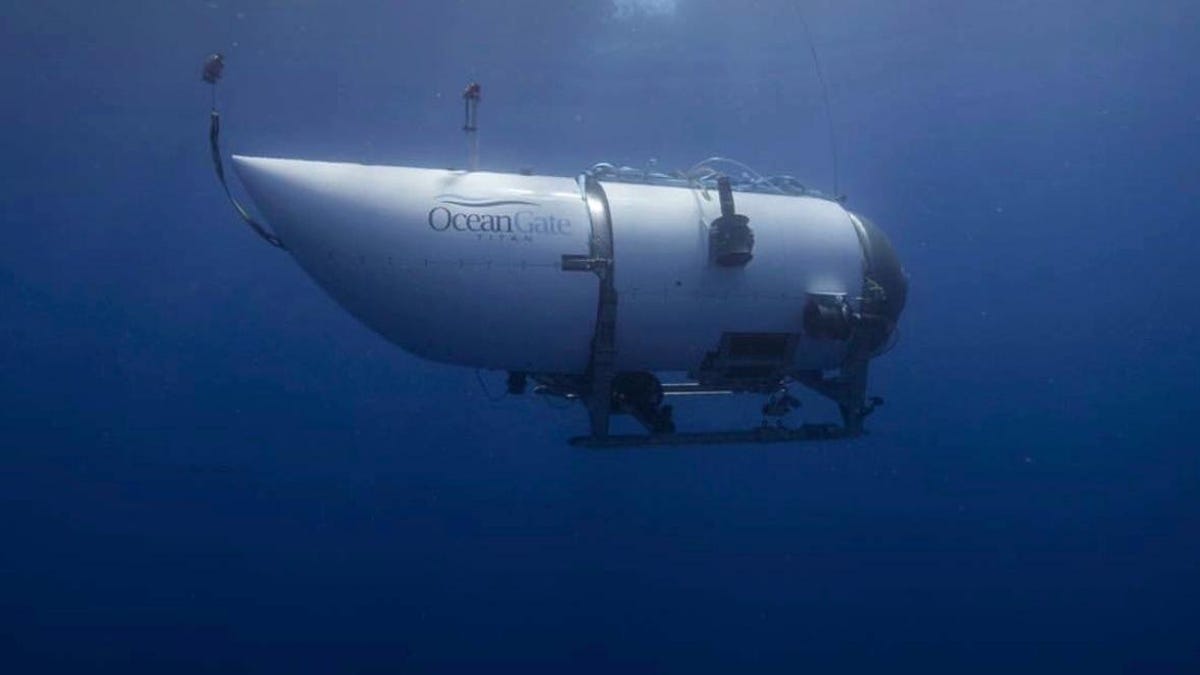
Whether it’s diving to the depths of the ocean or flying to the edge of space, the risks associated with extreme tourism haven’t deterred wealthy billionaires and other privileged individuals from buying their way to severe environments. The recent loss of the five passengers on board the submersible vessel, however, should serve as a sobering event for those planning a visit to space as part of a growing commercial industry.
On Thursday, officials ended a search and rescue mission for the missing Titanic submersible, announcing that the lives of the passengers on board were lost due to a catastrophic implosion of the vessel. Over the past five days, the plight of the five people on board the submersible Titan highlighted what is often viewed as frivolous journeys, where the risk (and cost) outweigh the purpose. Although the recent tragedy took place thousands of feet below the surface of the ocean, it’s still close territory to the growing space tourism industry taking civilians thousands of feet above Earth’s surface.
Advertisement
The vessel was partially built at NASA’s Marshall Space Flight Center in Alabama as part of an agreement between OceanGate, Titan’s operator, and the space agency. Titan was created using aerospace-grade carbon fiber, and the manufacturing of the submersible helped NASA learn more about how to create spacecraft that can survive extreme levels of pressure.
Aside from the similarities of the vehicles themselves, this type of extreme tourism is only accessible to a select few. In fact, one of the billionaires on board Titan was explorer Hamish Harding, who previously traveled to the edge of space aboard Blue Origin’s New Shepard rocket in June 2022. Blue Origin founder Jeff Bezos rode his own phallic-shaped rocket in 2021, traveling to suborbital heights above Earth’s surface to view the edge of space. Bezos became the second billionaire to go to space after British businessman Richard Branson beat him to it by nine days.
Advertisement
Advertisement
The exclusivity of those trips, however, is not synonymous with their safety. As the recent incident showed, even a $250,000 ticket does not guarantee a smooth ride. Tickets to space are around the same range or slightly higher, with promises from the industry that a suborbital trip could soon come at a lower price tag.
Branson’s Virgin Galactic recently announced that it will start offering commercial trips to the edge of space this summer, with each ticket on board the company’s suborbital spaceplane coming in at $450,000. Virgin Galactic has had a turbulent history with its suborbital flights. In 2014, the company’s SpaceShipTwo suffered an in-flight anomaly and crashed, resulting in the death of one of its pilots and the serious injury of another.
Jared Isaacman, another billionaire (in case you haven’t noticed the theme here), is preparing to board a SpaceX Dragon spacecraft later this year for the first in a series of private trips to space. The Polaris Dawn mission is also set to include the first spacewalk by a commercial crew, where astronauts are tethered to a spacecraft while working in the vacuum of space.
Balloon-powered ventures to the so-called edge of space are also likely to pose risks to both crews and paying customers. Space Perspective and World View are both working to develop thrilling tourist offerings, in which passengers are gently hoisted to the stratosphere at altitudes reaching 19 miles (30 kilometers) above the surface.
Advertisement
These flights won’t come close to reaching space, a demarcation line that exists 60 miles (100 km) above the surface, but passengers will be able to see the blackness of space and the curvature of Earth. Japanese startup Iwaya Giken recently unveiled the capsule for its space balloon, which bears a striking resemblance to slingshot rides found at local fairs. These future space tourism services may not involve rockets, but they are experimental, and as such, are not without risks.
NASA tries to regulate some of the details surrounding these trips, introducing a set of guidelines for Axiom Space’s commercial crews to the International Space Station (ISS). Even without the space agency’s direct regulations, the commercial space industry has been built on decades of experience and an existing framework that helps inform these private trips.
Advertisement
Still, space remains risky business and what’s even more alarming is that perhaps eager passengers aren’t fully aware of the risks. Similar to the waiver signed by the passengers on board OceanGate’s Titan, space tourists are also made to sign a waiver before boarding a commercial spacecraft, essentially flying at their own risk.
There’s little to no regulations surrounding the space tourism industry as it is still relatively new. The Federal Aviation Administration is the one that issues commercial space licenses but its role stops there, with no further guidelines on the safety of the crew on board.
Advertisement
The government seems to be on the side of protecting the space industry during its infancy stage. A newly passed Florida law would shield private space companies like Blue Origin and SpaceX from legal liability in the event of a crew member’s injury or death, fearing that a lawsuit could put these companies out of business.
It’s becoming clear, however, that the space tourism industry is in urgent need of regulations. Beyond that, perhaps the wealthy need a more stern reminder that space is an extreme environment that’s not to be taken lightly, the same as the bottom of the ocean.
Advertisement
For more spaceflight in your life, follow us on Twitter and bookmark Gizmodo’s dedicated Spaceflight page.
Services Marketplace – Listings, Bookings & Reviews